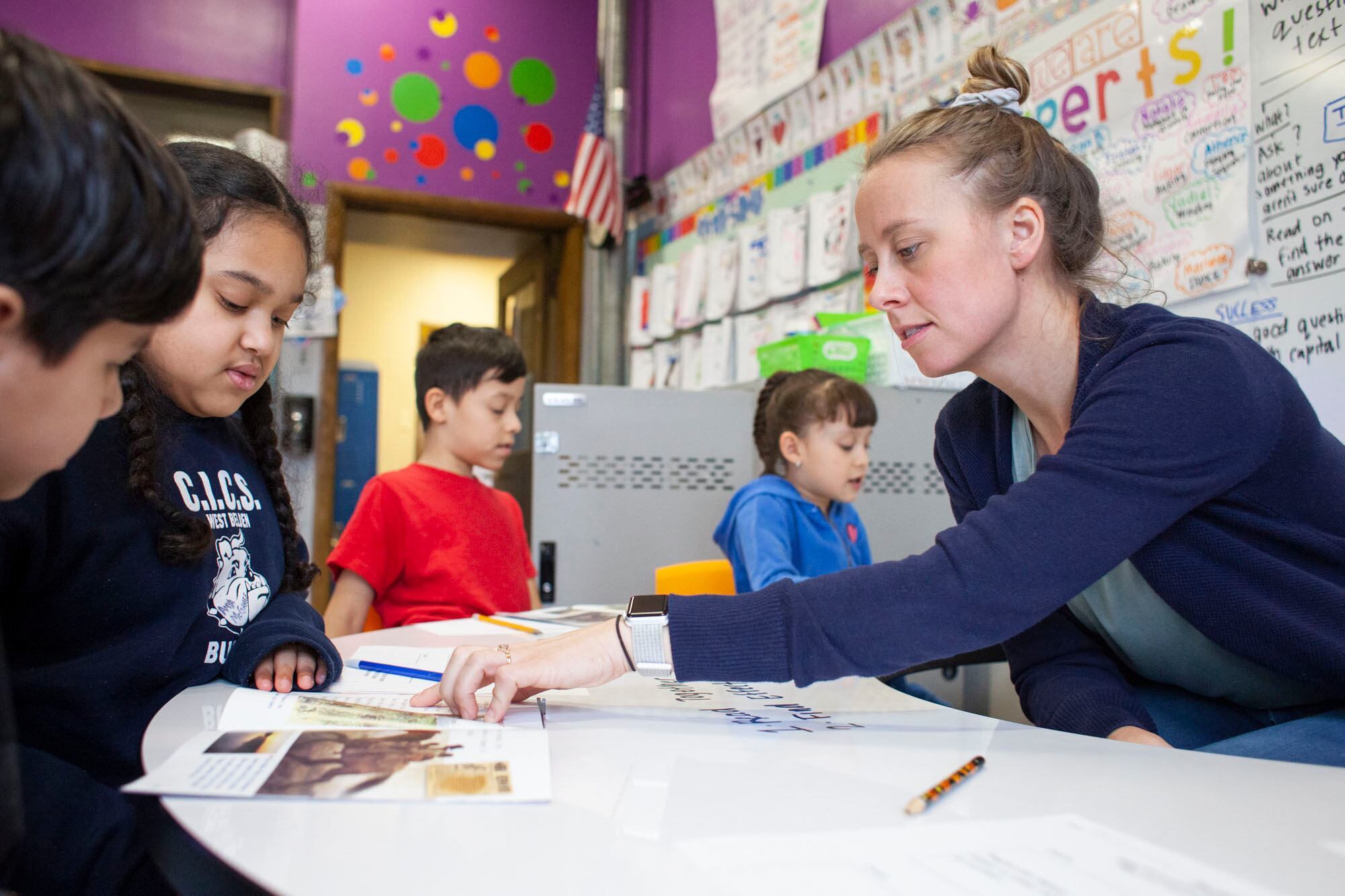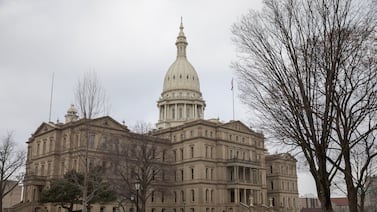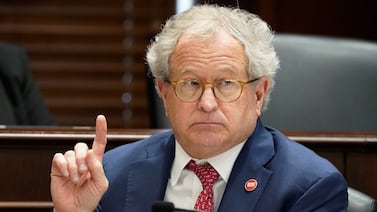Sign up for Chalkbeat Chicago’s free daily newsletter to keep up with the latest news on Chicago Public Schools.
Chicago Public Schools will receive an additional $76 million from the state this fiscal year for a total of $1.9 billion, according to new data released by the state on Friday.
The new figures indicate Chicago had a significant drop in local tax revenue and an increase in the number of English learners, giving it higher priority for additional state dollars. The new calculations also show that CPS is less adequately funded under the state’s formula than it was last year and will now need about $1.6 billion to reach adequate funding.
CPS had projected receiving an additional $25 million in state funding for the upcoming school year through the evidence-based funding formula, according to an April budget presentation leaked to Chalkbeat the district provided to the Chicago Board of Education. At the time, the district believed the budget gap was $529 million.That projection assumed the district would receive the same increase from the state as it did last school year.
Instead, the district will get about $50 million more than expected in April. A spokesperson for Chicago Public Schools said the state’s recent evidence-based funding formula calculations accurately reflect the challenges the district is facing such as the decline in local tax revenue and inflation.
“That increase will help schools and students but unfortunately does not keep pace with inflation, the rising costs of operating our schools, addressing capital needs, and proudly serving a greater percentage of students who require more services and programming,” said Mary Fergus, spokesperson for Chicago Public Schools.
The state prioritizes districts for additional money using a tier system, with those most in need designated as Tier 1 and Tier 2 and those able to use local revenue sources to adequately fund schools falling either in Tier 3 or Tier 4. Chicago has been categorized as a Tier 2 district since 2022, when the city experienced a dip in the number of students from low-income families and a bump in property tax revenue. CPS’s return to Tier 1 this year is the reason for the funding boost.
Chicago Public Schools is dealing with a budget gap at $734 million. The district has announced several reductions, including cutting 480 custodial jobs and end private custodial contracts to help lower costs.
The state’s second largest district serving almost 34,000 students, Elgin’s U-46, dropped from Tier 1 to Tier 2 and will receive less than last year due to a decline in average student enrollment and students from low-income households. The district will receive an additional $4.8 million, almost $14 million less than it received last year in new money.
Rockford School District 205, the state’s third largest district serving about 26,418 students, is expected to receive an additional $19.7 million in state dollars — $9.5 million more than last year. The district has seen an increase in average student enrollment, English learners, and a significant decrease in local property tax revenues.
The Illinois General Assembly approved the fiscal year 2026 budget at the end of June. The budget included an additional $307 million for K-12 schools around the state, less than the usual increase of $350 million. At the time, a spokesperson for the state board said the agency has paused the Property Tax Relief Grant, a program school districts applied for to receive assistance from the state. The program is being reevaluated.
State Superintendent Tony Sanders said in an email to Chalkbeat that adding an annual minimum of $300 million to the funding formula for schools received a “broad consensus” among advocacy groups and education stakeholders.
“That consistency has been critical in allowing districts to plan long-term,” Sanders said, adding that “ISBE continues to advocate for a sustainable and reliable annual increase of $300 million for tier funding.”
This year, the Illinois evidence-based funding formula currently sits at $8.9 billion. The state’s funding formula has grown by $2.1 billion under Gov. J.B. Pritzker’s administration, according to a press release from the Illinois State Board of Education. The state’s overall education budget, which includes the evidence-based funding formula for K-12 districts, an early childhood education block grant, transportation, career and technical education programs, and other grants is $11.1 billion.
The state board said in a press release that the number of districts at or above 90% adequacy increased from 194 to 313 between fiscal years 2018 and 2026.
State formula works, but needs more funding, advocates say
When lawmakers created the funding formula in 2017, they set a deadline to get schools “adequately” funded by 2027. The law guarantees all Illinois school districts the same funding as the previous year and then distributes new money based on a variety of metrics, such as the number of students from low-income families, the average student enrollment, the number of English learners, and how much a district can raise through local property taxes. The formula calculates an “adequacy target” or how much each district needs to educate their students.
The districts most in need of help funding their schools, or Tier 1 districts, get the largest increases while those with less need, Tier 4 districts, get smaller increases.
While the state has allocated more funding to the funding formula, many advocates say more is needed.
Ralph Martire, executive director of the Center for Tax and Budget Accountability, who was involved in the creation of the evidence-based formula, said that while the formula is working as it is intended, it is time for the state to rethink adding only an additional $300 million into the formula each year.
“There’s no way a flat bump on a year-to-year basis is going to get you to the level you need to be, unless that flat bump is significantly greater than year to year inflationary growth,” said Martire.
Since the COVID-19 pandemic, some education advocates have been calling on the state to invest an additional $550 million annually into the evidence-based funding formula.
Bravetta Hassell, director of communications for advocacy organization Advance Illinois, said in a statement to Chalkbeat that while the organization appreciates the commitment to honoring the annual minimum increase for the formula, it joins other education advocates in saying “it’s not enough.”
“We cannot wait another generation to get to full funding,” Hassell said, “The minimum investment of $350 million a year simply won’t cut it for our students.”
A 2022 report from Martire’s group estimated that if the state continues to add only $350 million a year to the formula, districts will not be adequately funded by 2034 — seven years past the original deadline of 2027.
Districts around the state anticipate doing some belt-tightening for their local budget since the $7 billion in federal emergency COVID relief funds have dried up. In addition, the Trump administration has threatened federal funding to schools and, in early July, withheld funds meant to go to schools but redistributed them later in the month.
Reema Amin contributed to this report
Samantha Smylie is the state education reporter for Chalkbeat Chicago covering school districts across the state, legislation, special education and the state board of education. Contact Samantha at ssmylie@chalkbeat.org.






